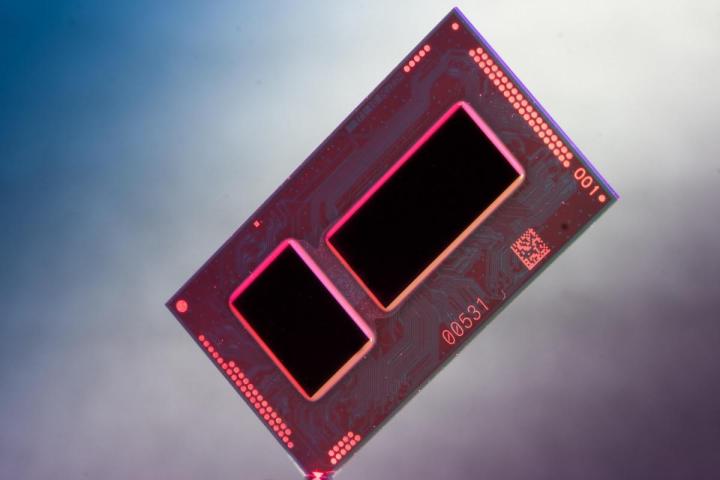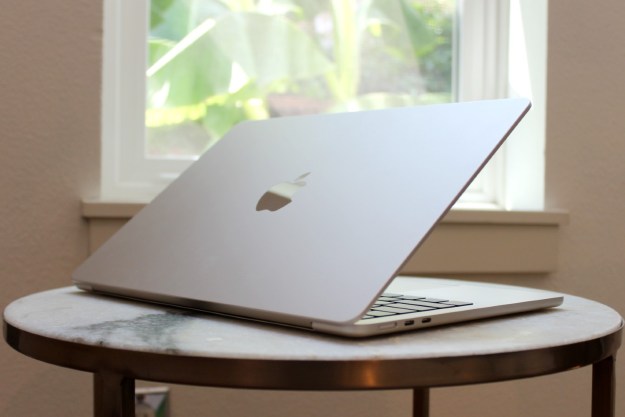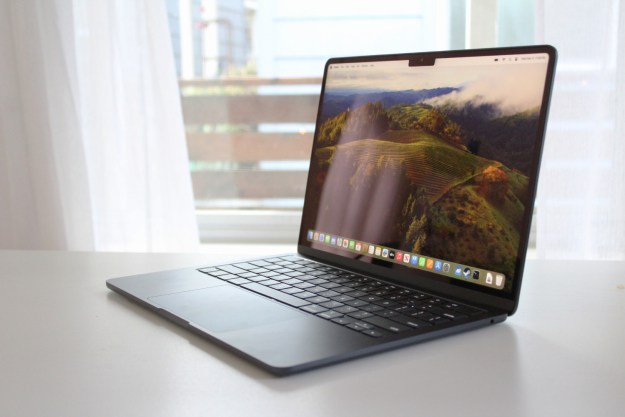
Update 12/24/2014 9:28AM: The conclusion of this article has been changed to reflect more recent information about Intel’s remaining Broadwell product lineup.
At IFA 2014, Intel gave us the full skinny on its fifth-generation Broadwell-based Intel Core M CPUs. The chips would be thinner, and more energy-efficient than past CPUs, while also offering solid performance. They would pave the way for slimmer, lighter devices than anything we’ve ever seen before.
If our time with the Core M-powered Lenovo Yoga 3 Pro is any indication, that latter bit is true. But what about the energy efficiency and performance aspects? Does Core M measure up, or does it come up short?
We got to thoroughly test out the Core M, so now we can answer those questions in full.
Here’s what we learned. But first, we’ll go through a brief refresher course on the particulars of Core M together.
What’s Core M supposed to do again?
The most efficient chips from about four years ago need 18.5 watts to operate. Similar chips from last year require 11.5 watts of power. Core M cuts that number down drastically, asking for a mere 4.5 watts of juice.
However, there’s more to Core M than increased efficiency, and (presumably) better battery life for whatever devices it’s in. Core M chips are also, as we mentioned, much smaller than their older siblings.
Core M hardware measures 30 x 16.5 x 1.05 millimeters thick, while fourth-generation Intel hardware measures 40 x 24 x 1.5 millimeters. That’s a significant reduction
So, it’s simple math. Smaller hardware means more space in system cases for PC makers to work with. This, in turn, leads to slimmer, and lighter devices, like in the case of the Yoga 3 Pro.
Also, because Core M sips on energy, it can operate while fan-less. This allows computer manufacturers to omit components from their systems that are associated with keeping internals cool, including fans, heat-sinks, and air vents.
Sizing up our Core M chip
Keep in mind that Core M consists of a family of chips, not just one part. The one we got our hands on, the 5Y70, is the second most powerful Core M chip that Intel is launching as part of this wave of silicon. The Intel Core M-5Y70 is a dual-core chip clocked at 1.1GHz, with a Turbo Boost clock of 2.6GHz.
Not only is this the fastest Core M chip that’s out now, it’ll only be 100MHz slower than the highest-end Core M chip that Intel is launching this year. The next chip up on the totem pole is the 5Y71. That CPU runs at 1.2GHz, sports a Turbo Boost clock of 2.9GHz, and is also a dual-core chip.
How we test
We use a number of tests to evaluate components like processors and GPUs. Our CPU test regimen, at this point, consists of SiSoft Sandra, 7-Zip, and Geekbench.
Our graphics tests include 3DMark Cloud Gate, Fire Strike, and League of Legends.
Benchmark tests
Using the Yoga 3 Pro as our test bed, we started with SiSoft Sandra’s Processor Arithmetic test.
The Lenovo Yoga 3 Pro scored 29.33 GOPS. We compare that with the Yoga 3 Pro’s strongest and most direct competitor, which is the Dell XPS 13.
That notebook earned a grade of 38.79 GOPS. The XPS 13 is spearheaded by a significantly more powerful Intel Core i5-4200U chip, which was also present in last year’s Yoga 2 Pro.
Moving on, we next tested the Core M 5Y70 CPU in the Yoga 3 Pro using 7-Zip. The Yoga 2 Pro scored 7,080, and the Dell XPS 13 is neck and neck with it at 7,079. The Yoga 3 Pro’s Core M CPU was far behind, however, with a grade of 5,347.
In Geekbench, the Lenovo Yoga 3 Pro earned a single-core score of 2,453, and a multi-core mark of 4,267. We didn’t use Geekbench when we reviewed the Yoga 2 Pro and Dell XPS 13, but we did use it with Lenovo’s Z40 notebook, which has the same Core i5-4200U processor that the 13 and the Yoga 2 Pro have. The Z40 earned a multi-core score of 4,628.
The Intel Core M 5Y70 is clearly not built for strenuous workloads. If you keep multi-tasking under control, though, it should at least make for a passable computing experience.
Graphics performance
Processing power may not be the CPU’s forte, but how does the Core M’s Intel HD Graphics 5300 GPU get by?
The Lenovo Yoga 2 Pro scored 3,889 in 3DMark Cloud Gate, and 579 in 3DMark Fire Strike. The Dell XPS 13 got 4,507 and 627 in the same tests, respectively. The Lenovo Yoga 3 Pro lags behind both significantly, with scores of 2,636 in Cloud Gate, and 376 in Fire Strike.
Though the Yoga 2 Pro and the Dell XPS 13 don’t conquer these tests, they’re in a different league. Both have well over 1,000 points on the Yoga 3 Pro in 3DMark Cloud Gate, and scores that are at least 200 points higher in Fire Strike.
Combine that with real-world performance, and you’ve got yourself a clear picture of what a graphics chip can do. We fired up League of Legends, a popular game that’s also the least demanding title we use to test GPUs.
Forget about enjoying it with the Core M, at least on the Yoga 3 Pro. With League of Legends running at the display’s native resolution of 3,200 x 1,800, the game ran between 18, and 8 frames per second. The game’s visual details were set to Medium.
For what it’s worth, we’re curious to see how Core M will fare on 720p and 1080p systems. We think it could manage at 1080p based on its 3DMark score, if only by the skin of its teeth.
Better endurance
In the Peacekeeper Web browsing benchmark test, the Lenovo Yoga 3 Pro lasted only three hours and 44 minutes on a single charge. That’s a notable improvement of 30 minutes over the Yoga 2 Pro’s time of three hours and 14 minutes. Both notebooks have 3,200 x 1,800 displays.
The Dell XPS 13 is in another league here, lasting seven hours and 48 minutes in the same test. Of course the 13 has a much less demanding 1080p display to work with.
Since both Yogas are forced to push an extremely high amount of pixels, the battery is taxed significantly as a result.
These days, 1080p is the sweet spot of display resolutions. That’s especially the case with laptops, where battery life has to be a key consideration when PC makers outfit their systems.
As with graphics capabilities, we want to see what Core M can provide in a 720p or 1080p system. In the Yoga 3 Pro, however, no amount of CPU-centric power efficiency can save Lenovo’s latest from a poor battery life score.
Better than it seems
The Intel Core M looks like a disappointment. It’s not as quick as previous Intel 4th-generation processors, and it doesn’t always lead to outstanding battery life. You might be wondering – what’s the point?
Closer inspection, however, reveals there’s actually significant improvement here. Consider the multi-core GeekBench score of 4,267. That’s several hundred less than the an ultrabook with an Intel Core i5-4200U, but that 4th-generation processor has a quoted Thermal Design Power (TDP) of 15 watts. The Core M-5Y70 has a quoted TDP of 4.5 watts. On paper that means the Core M manages almost equivalent performance on a third of the power. In reality TDP does not translate to actual power draw (it’s a guideline for laptop manufacturers, not a benchmark), but in any case it’s clear the Core M consumes far less juice.
That may be hard to believe given the Yoga 3 Pro’s poor battery life, but several of Lenovo’s design decisions make life difficult even for the Core M. The most important is not the screen but rather the battery, which is rated at 44 watt-hours. That’s not small, but it’s not large, and it’s ten watt-hours smaller than the battery in the Lenovo Yoga 2 Pro. In other words, Lenovo’s design choice to save weight by reducing the size of the battery has mostly negated the advantage of the new, power-sipping processor. Most manufacturers will not make the same decision.
And remember, this early look at Core M and Broadwell is just the first slice of the pie. CES 2015 is where Intel will reveal the meat of its product line, and while the official details of those chips aren’t yet available it’s safe to assume we’ll see some with a 15 watt TDP (or somewhere near), just as with the 4th-generation Core line. Those processors will likely manage a noticeable boost in both battery life and performance. 2015 may prove an excellent time to upgrade if you own a laptop that’s getting on in years.
Editors' Recommendations
- These 6 tweaks take MacBooks from great to nearly perfect
- 5 laptops you should buy instead of the M2 MacBook Air
- I’m worried about the MacBook’s next big rival
- Why you should buy a MacBook Pro instead of a MacBook Air
- All the ways Intel Macs are still better than Apple Silicon Macs


